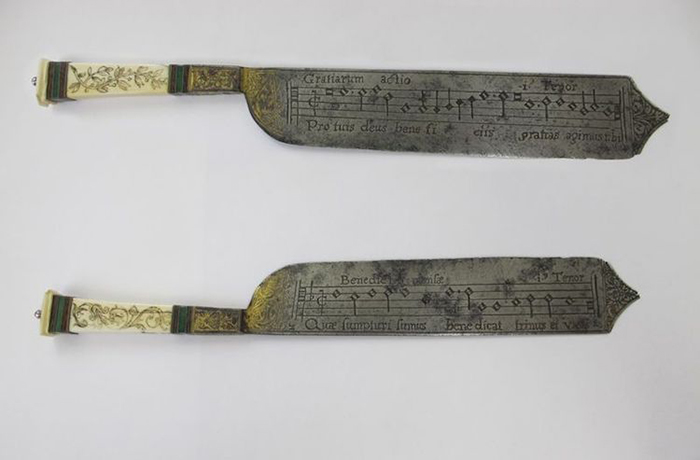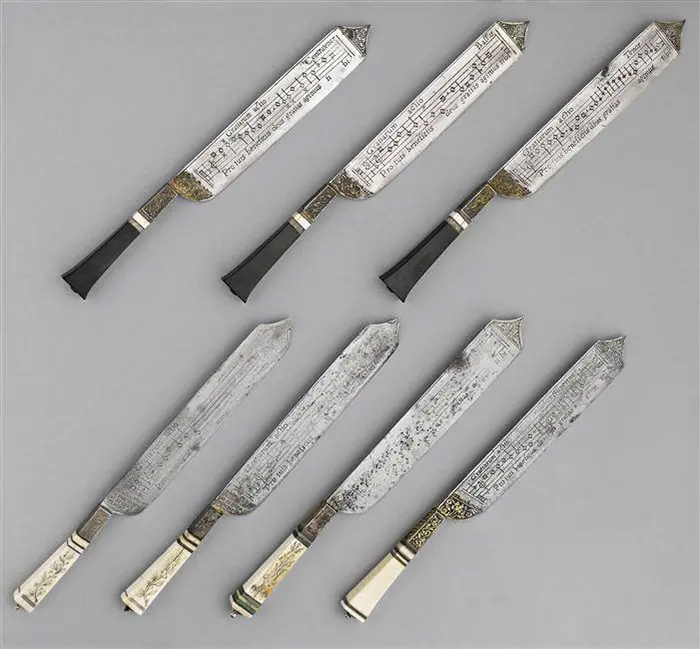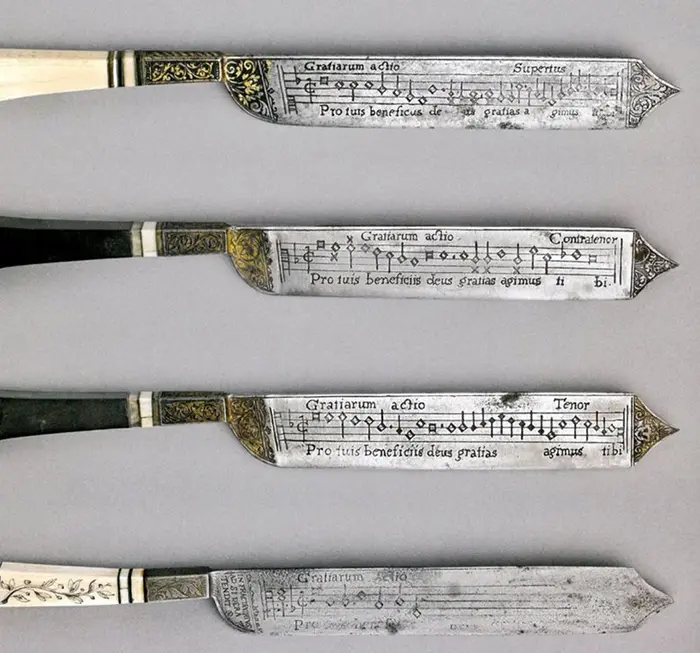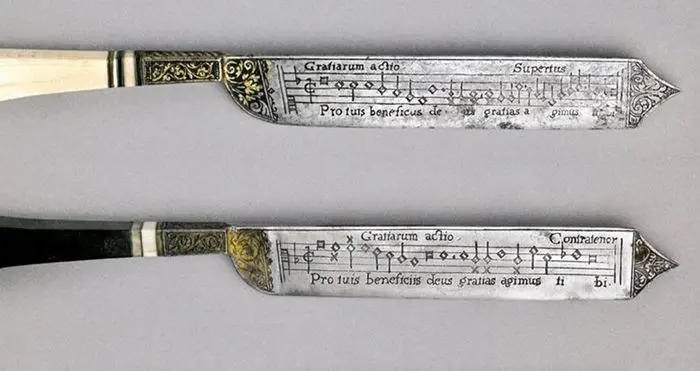Every household needs a knife set or at least one knife that can carve meat and slice vegetables. But did you know that in the 16th century, knives were more than just a staple kitchen utensil? Sure, some knives served as weapons for hunting and killing. However, there are notation knives. And by that, we really mean knives with musical scores engraved on them. Talk about cutting-edge music, huh?
In a typical Catholic family setup, saying grace before and after meals is a daily thing. It turns out that it was no different for families in Italy during the Renaissance period. And the engravings on these musical knives can prove that true.

The photo above shows two sides of the same blade. On one side, there’s a benediction, which is to be sung at the beginning of a meal. On the other side is grace, which is to be sung at the end of a meal. The benediction reads: “The blessing of the table. May the three-in-one bless that which we are about to eat.” The grace states: “The saying of grace. We give thanks to you God for your generosity.”
One knife represents the part of one singer, so a set of knives can actually create one harmonious chorus

More than that, the knives are pretty functional too. Although it may be hard to determine how exactly they were used, their form gives us an idea at least. Kirstin Kennedy, a curator at the Victoria & Albert Museum, has laid out some plausible theories behind these notation knives.
“Part of the design suggests that it was used for cutting meat – it has a fairly sharp blade. But the width of it suggests that it may have been used to present meat. You offered a slice of meat that you’d carved to a diner. And of course, this little point at the end here, you see, would have been used also to pick up a slice of meat.”
However, she also pointed out that “diners in very grand feasts didn’t cut their own meat.” And that’s because they likely had “squires” to do it for them. So, was it the diners or the squires who used these musical knives? We guess we’ll never know. The Renaissance table and the rituals surrounding it remain a mystery even up to this date.

Nonetheless, we can enjoy the music at the very least. Thanks to another V&A curator, Flora Dennis and the Royal College of Music. Dennis revealed that she has collected various images of the notation knives from different parts of the world. It turns out that the knives have made their way to America, Paris, Belgium, and Germany, to name a few.
“I’ve been piecing together the location of these knives, getting photographs of them, and then actually starting to transcribe the music that’s found on them.”
Watch this video to learn more about these 16th-century knives and witness how the musical notes engraved on them come to life
You can find other versions of the recordings here.
Source: Victoria & Albert Museum Website | YouTube

